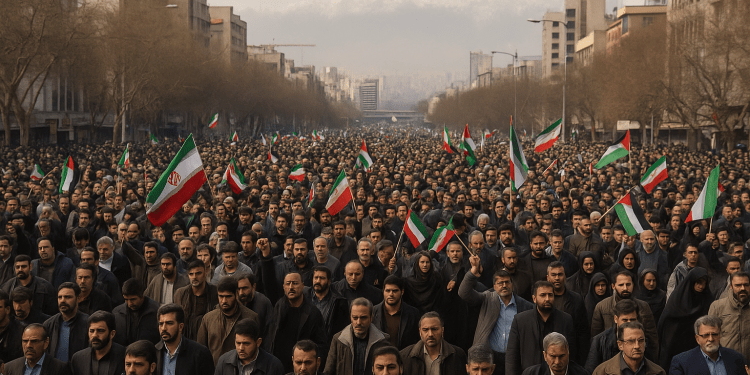Tens of Thousands in Tehran Rally Against Israeli Attacks
According to reports from Al Jazeera and local media sources, the streets of Tehran were flooded this week with massive crowds protesting Israeli airstrikes that targeted key sites in Iran.
Waving Palestinian flags and chanting anti-Israel slogans, many demonstrators rallied around the symbolic unity of the “Axis of Resistance” — Iran, Hezbollah, and allied militias in Iraq, Syria, and Yemen.
The message from the streets was clear: foreign aggression has stirred nationalistic emotion.
🧠 Is This Really Unanimous Support for the Regime?
Despite the anti-Israel tone, analysts caution against assuming that these crowds represent blanket support for the Iranian government.
Many Iranians may have joined the protests not out of loyalty, but out of defiance against foreign attacks. In times of crisis, even dissatisfied citizens may feel the need to stand with their country — if not their leaders.
📌 A People Under Pressure — Internally and Externally
The Islamic Republic faces a paradox:
- On one hand, its foreign policy has provoked military retaliation from Israel.
- On the other, economic stagnation, censorship, and repression have led to years of civilian unrest — especially among women and youth.
“We are united against Israel, not necessarily for our leaders,” one student protester told a foreign reporter anonymously.
This sentiment reflects a growing phenomenon: reluctant solidarity.
📊 Why These Protests Matter — And Why They’re Complicated
These are not the same protests as the Mahsa Amini uprising of 2022. Back then, the chants were about freedom, hijab laws, and dictatorship.
Today, Tehran’s demonstrations are framed as national defense. But that doesn’t erase the regime’s legitimacy crisis.
What we may be witnessing is a tactical pause in domestic rebellion — one driven by the psychology of external threat.
Watch (LIVE replay): CNN footage of the Middle East crisis, including Israeli strikes and U.S. response discussions.
🌍 Regional Implications
- Israel’s strategy of direct strikes appears to be unifying Iran in the short term.
- However, if the U.S. were to join militarily, either overtly or through regional assets, Iran’s leadership could spin this into a “total war” narrative — giving itself broader domestic power.
- Yet the underlying grievances — inflation, surveillance, and lack of freedoms — remain unresolved.
🔮 Forecast: Unity on the Surface, Tension Underneath
▶ Short-Term Outlook:
- Massive mobilization will continue as long as Israeli strikes persist.
- Government will likely encourage televised unity, anti-Zionist slogans, and religious symbolism.
▶ Long-Term Outlook:
- Once the external threat recedes, internal protests may reignite, particularly if economic conditions worsen.
- The youth-led underground movement will likely gain renewed momentum.
✅ Conclusion: A Nation Between Resistance and Reflection
Tehran is on fire — with anger, with fear, and with pride.
But beneath the nationalistic chants lies a more nuanced truth:
Many Iranians are caught between opposing a foreign enemy and distrusting their own leaders.
This protest is not only against Israel —
it is also a reluctant, temporary alignment with a regime they do not fully believe in.
And when the airstrikes stop, the regime may once again hear the chants it’s tried so hard to silence.
📺 Watch: In-depth coverage of the ongoing Israel–Iran tensions by Al Jazeera.

